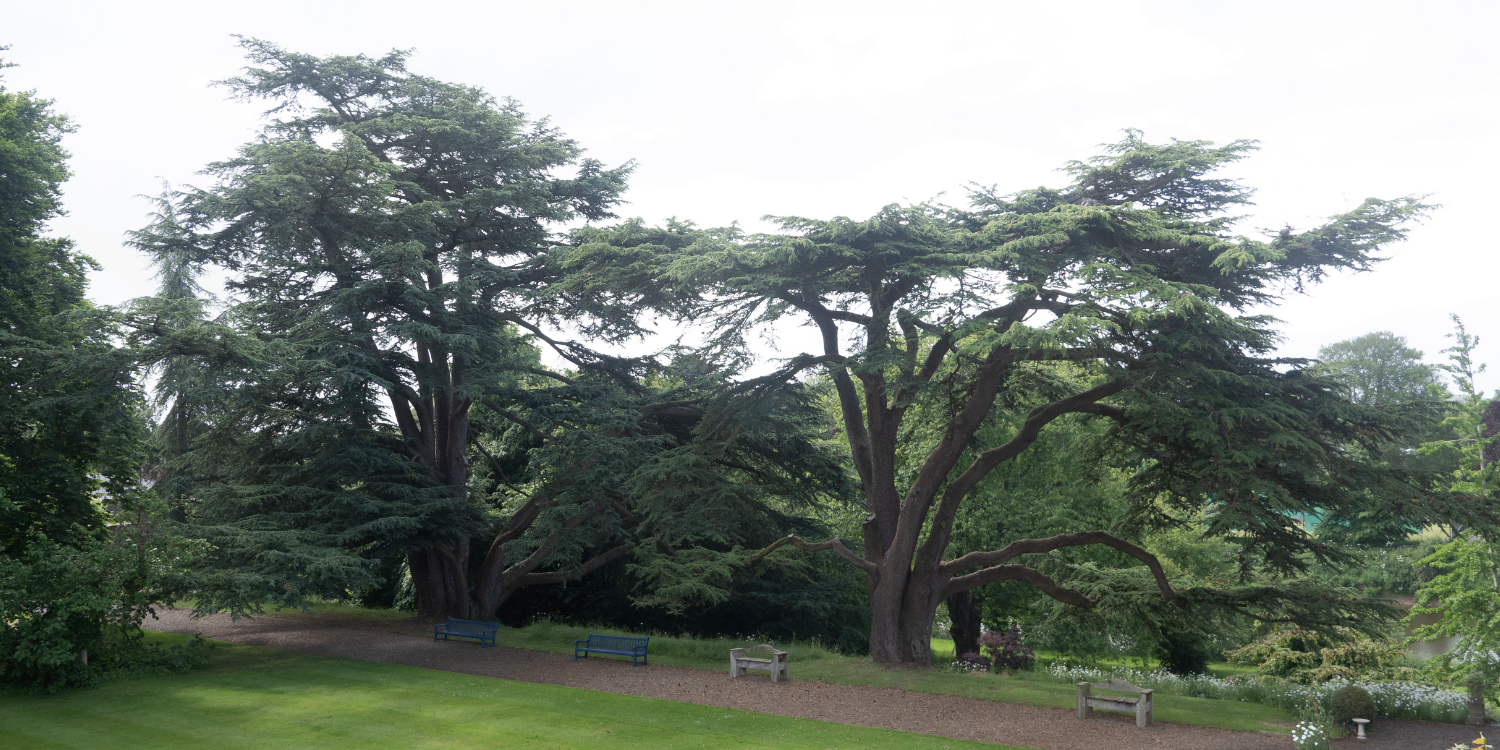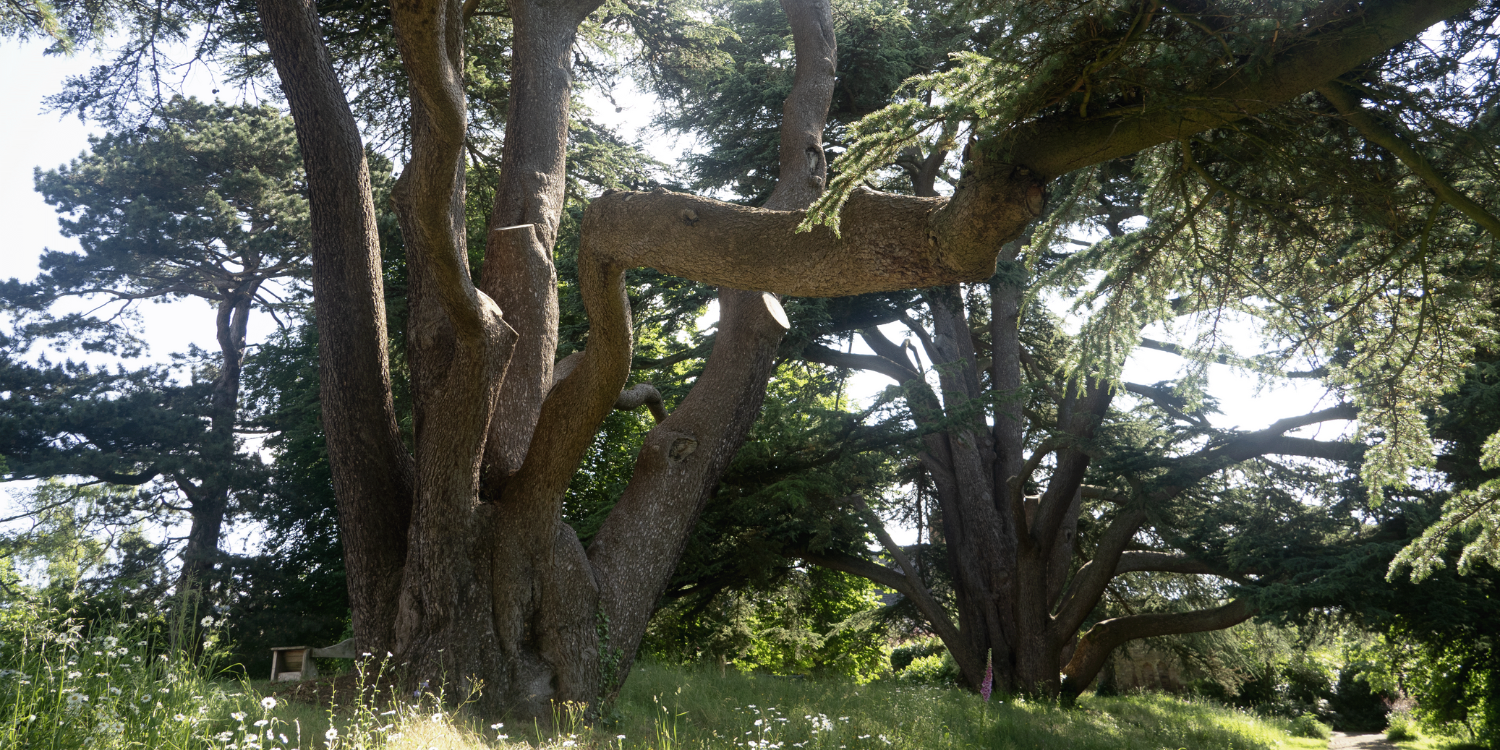
Cedrus libani - Cedar of Lebanon (nearest to Palace) native to Lebanon, western Syria and south central Turkey, used by ancient civilizations for ships, as well as for houses, palaces, and temples. The ancient Egyptians used its resin in mummification, and its sawdust has been found in the tombs of Egyptian Pharaohs. Cedars are well documented in history with the
word Cedar is mentioned 75 times in the Bible. Solomon used cedar wood to build his temple: 1 Kings 5:8. It is the national emblem of Lebanon and appears on the Lebanese flag, It was introduced to Britain in the 1620s at Fulham Palace by Bishop Henry Compton.
Cedrus atlantica - Atlas cedar, native to the Atlas Mountains of Algeria and Morocco. Its bluish tinge and ascending branches help to differentiate it from other cedars.
The Atlas and Lebanon cedars were probably planted here shortly after c. 1850.
Cedrus deodara - Deodar cedar (nearest to the Deanery garden), native to the western Himalayas. A relatively recent planting.
